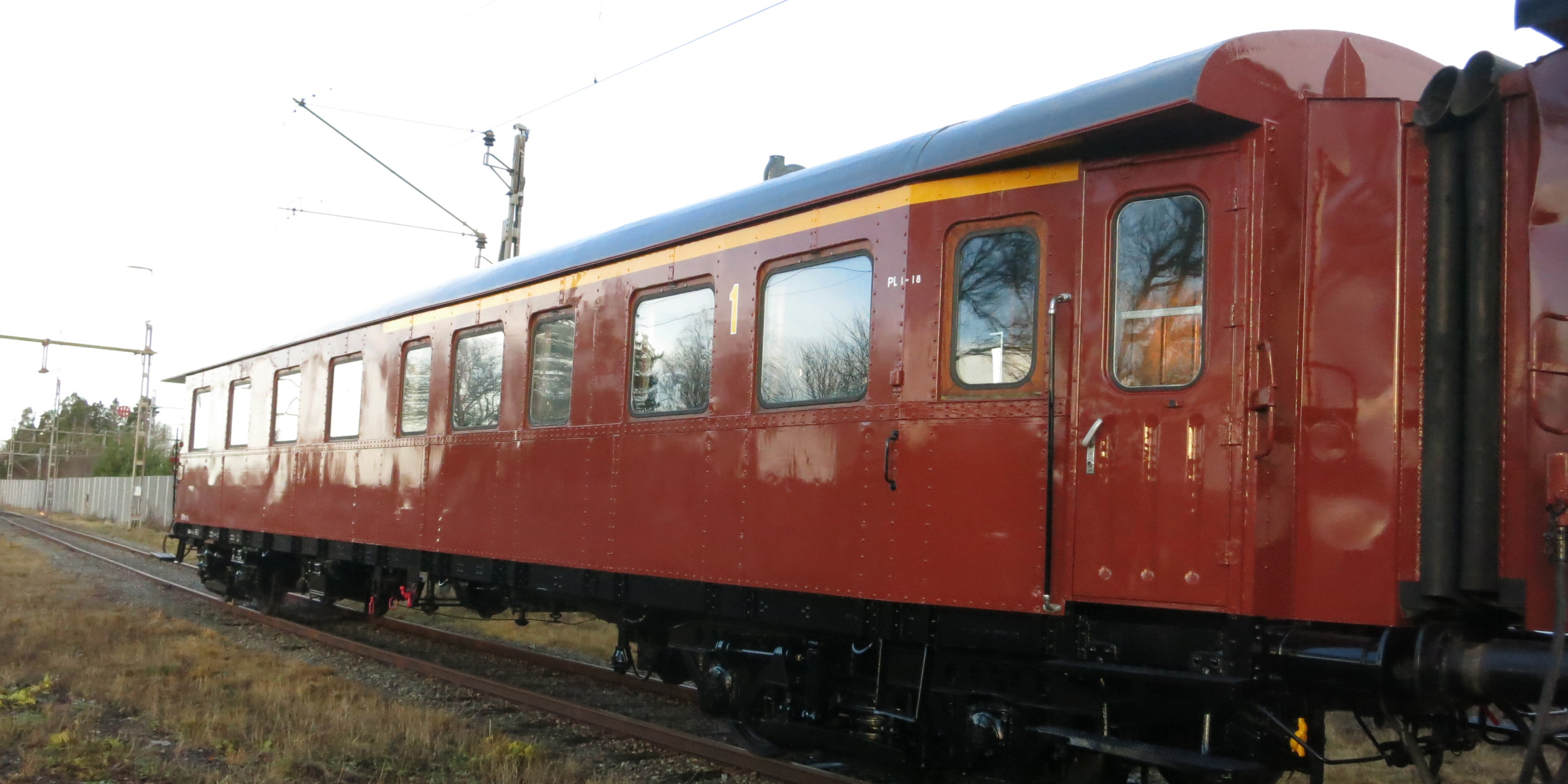
Combination first and second class carriage ABo6c 2971
The combination first and second class carriage is the oldest in the Swedish Railway Museum’s fleet. It was built back in 1926 for the East Coast Line (Ostkustbanan).
The carriage was manufactured by Gothaer Waggonfabrik AG in Gotha, in the German state of Thuringia. A total of nine carriages of this type were produced, three of which are preserved at the Swedish Railway Museum.
The Gävle-Härnösand stretch of the East Coast Line (with the designation OKB) was the only line that fully invested in steel carriages. By the time it opened in 1927, it already had a large fleet of carriages. At that time, this carriage was green and went by the designation OKB BCo 51.
There were originally 24 seats in first class divided into four compartments, and 45 seats in third class divided into two saloons. The bogie carriages of the East Coast Line also travelled to Stockholm, where they were nicknamed the “tank train”.
SJ took over the carriages in 1933, at which time they were painted brown and SJ gave this carriage the new name SJ BCo6b 2971.
In 1956, the carriages were renamed ABo6b, and in 1959 the 2971 was rebuilt from ABo6b to ABo6c. They were then given new end sections on the roof, while first and second class switched places. This resulted in four second class compartments and two saloons in first class instead.
The carriage was taken out of service in the mid-1980s and became a museum carriage of the Ostkustbanans Vänner association. It has been at the Swedish Railway Museum since 2016, and has been restored to the appearance it had between 1961 and 1970.
Manufactured
Waggon- und Maschinenbau AG, Görlitz, 1926
Length
21.2 metres
Weight
40 tonnes
Maximum permitted speed
130 km/h